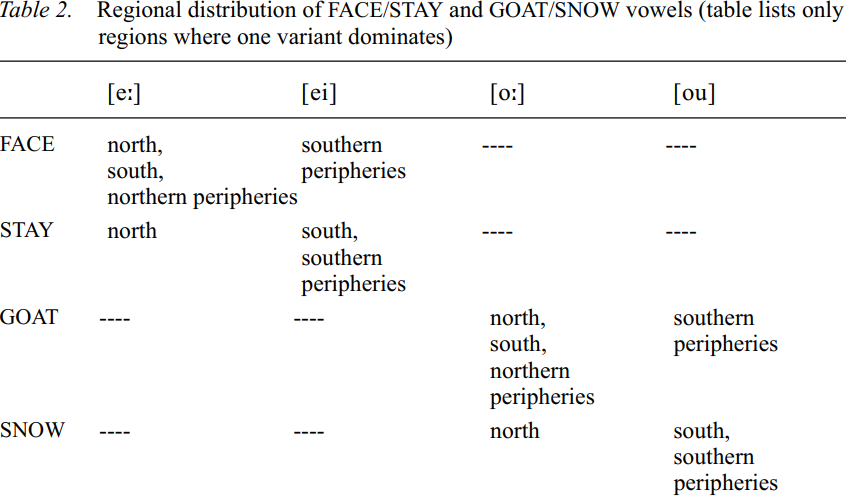

Grammar


Tenses


Present

Present Simple

Present Continuous

Present Perfect

Present Perfect Continuous


Past

Past Simple

Past Continuous

Past Perfect

Past Perfect Continuous


Future

Future Simple

Future Continuous

Future Perfect

Future Perfect Continuous


Parts Of Speech


Nouns

Countable and uncountable nouns

Verbal nouns

Singular and Plural nouns

Proper nouns

Nouns gender

Nouns definition

Concrete nouns

Abstract nouns

Common nouns

Collective nouns

Definition Of Nouns


Verbs

Stative and dynamic verbs

Finite and nonfinite verbs

To be verbs

Transitive and intransitive verbs

Auxiliary verbs

Modal verbs

Regular and irregular verbs

Action verbs


Adverbs

Relative adverbs

Interrogative adverbs

Adverbs of time

Adverbs of place

Adverbs of reason

Adverbs of quantity

Adverbs of manner

Adverbs of frequency

Adverbs of affirmation


Adjectives

Quantitative adjective

Proper adjective

Possessive adjective

Numeral adjective

Interrogative adjective

Distributive adjective

Descriptive adjective

Demonstrative adjective


Pronouns

Subject pronoun

Relative pronoun

Reflexive pronoun

Reciprocal pronoun

Possessive pronoun

Personal pronoun

Interrogative pronoun

Indefinite pronoun

Emphatic pronoun

Distributive pronoun

Demonstrative pronoun


Pre Position


Preposition by function

Time preposition

Reason preposition

Possession preposition

Place preposition

Phrases preposition

Origin preposition

Measure preposition

Direction preposition

Contrast preposition

Agent preposition


Preposition by construction

Simple preposition

Phrase preposition

Double preposition

Compound preposition


Conjunctions

Subordinating conjunction

Correlative conjunction

Coordinating conjunction

Conjunctive adverbs


Interjections

Express calling interjection


Grammar Rules

Passive and Active

Preference

Requests and offers

wishes

Be used to

Some and any

Could have done

Describing people

Giving advices

Possession

Comparative and superlative

Giving Reason

Making Suggestions

Apologizing

Forming questions

Since and for

Directions

Obligation

Adverbials

invitation

Articles

Imaginary condition

Zero conditional

First conditional

Second conditional

Third conditional

Reported speech


Linguistics

Phonetics

Phonology

Linguistics fields

Syntax

Morphology

Semantics

pragmatics

History

Writing

Grammar

Phonetics and Phonology

Semiotics


Reading Comprehension

Elementary

Intermediate

Advanced


Teaching Methods

Teaching Strategies

Assessment
Stressed vowels FACE/STAY and GOAT/SNOW
المؤلف:
Robert Penhallurick
المصدر:
A Handbook Of Varieties Of English Phonology
الجزء والصفحة:
104-5
2024-02-22
1279
Stressed vowels FACE/STAY and GOAT/SNOW
The regional patterning of two characteristic sounds of Welsh English, the long monophthongs [e:] and [o:], is complex. They occur in both the main northern and southern areas in words such as bacon, break, great, make (FACE) and coal, road, spoke, toe (GOAT) respectively. In these cases, the monophthongs can be regarded as phonemic, but overall their distribution is complicated by their occurrence also in words such as clay, drain, weigh, whey (STAY) and cold, shoulder, snow (SNOW). In STAY and SNOW, it is difficult to argue that the monophthongs are phonemic, for in these groups diphthongs, [ei] and [ou], are more likely. In addition, diphthongal forms can occur in FACE and GOAT. Table 2 summarizes the situation for the whole of Wales, outlining the competition between monophthongs and diphthongs in FACE, STAY, GOAT, and SNOW.
[e:] occurs most commonly in FACE, being dominant (in these words) in the north and south, and in the northern peripheries. [ei] in FACE is dominant only in the southern peripheries. In STAY, however, the diphthong is prevalent throughout the south, whilst the monophthong is dominant in the north. The sequence is the same for the [o:] – [ou] pair: the monophthong is dominant in GOAT everywhere but the southern peripheries, and in SNOW the diphthong dominates in the south, the monophthong in the north.

A number of processes have produced this pattern. Firstly, the Welsh language has no diphthongs of the /ei/ and /ou/ types, and the Welsh monophthongs /e:/ and /o:/ have exerted an influence in Welsh English over words which have  and
and  in RP. Running counter to this are spelling pronunciations affecting STAY and SNOW, leading to the diphthongal forms, the general rules being: spellings with <ai>, <ay>, <ei>, <ey>, encourage [ei], and spellings with <ou>, <ow> encourage [ou], with <ol> spellings falling in with SNOW rather than GOAT. Furthermore, there has been influence from neighboring accents of English English: [e:] and [o:] have been reinforced in the north of Wales by the influence of monophthongs occurring in the north-west of England; [ei] and [ou] have been supported by the diphthongs of the west and south-west of England, as well as those of RP, of course.
in RP. Running counter to this are spelling pronunciations affecting STAY and SNOW, leading to the diphthongal forms, the general rules being: spellings with <ai>, <ay>, <ei>, <ey>, encourage [ei], and spellings with <ou>, <ow> encourage [ou], with <ol> spellings falling in with SNOW rather than GOAT. Furthermore, there has been influence from neighboring accents of English English: [e:] and [o:] have been reinforced in the north of Wales by the influence of monophthongs occurring in the north-west of England; [ei] and [ou] have been supported by the diphthongs of the west and south-west of England, as well as those of RP, of course.
It is worth emphasizing that Table 2 simplifies a fluid situation. For example, the accents of particular localities or even individuals exhibit register-sensitive movement between monophthongal and diphthongal types, especially in the FACE and GOAT groups. Table 2 also simplifies the overall regional pattern: we can note here, for example, that neither monophthong nor diphthong dominates in STAY and SNOW in the northern peripheries.
 الاكثر قراءة في Phonology
الاكثر قراءة في Phonology
 اخر الاخبار
اخر الاخبار
اخبار العتبة العباسية المقدسة

الآخبار الصحية















 "المهمة".. إصدار قصصي يوثّق القصص الفائزة في مسابقة فتوى الدفاع المقدسة للقصة القصيرة
"المهمة".. إصدار قصصي يوثّق القصص الفائزة في مسابقة فتوى الدفاع المقدسة للقصة القصيرة (نوافذ).. إصدار أدبي يوثق القصص الفائزة في مسابقة الإمام العسكري (عليه السلام)
(نوافذ).. إصدار أدبي يوثق القصص الفائزة في مسابقة الإمام العسكري (عليه السلام) قسم الشؤون الفكرية يصدر مجموعة قصصية بعنوان (قلوب بلا مأوى)
قسم الشؤون الفكرية يصدر مجموعة قصصية بعنوان (قلوب بلا مأوى)


















